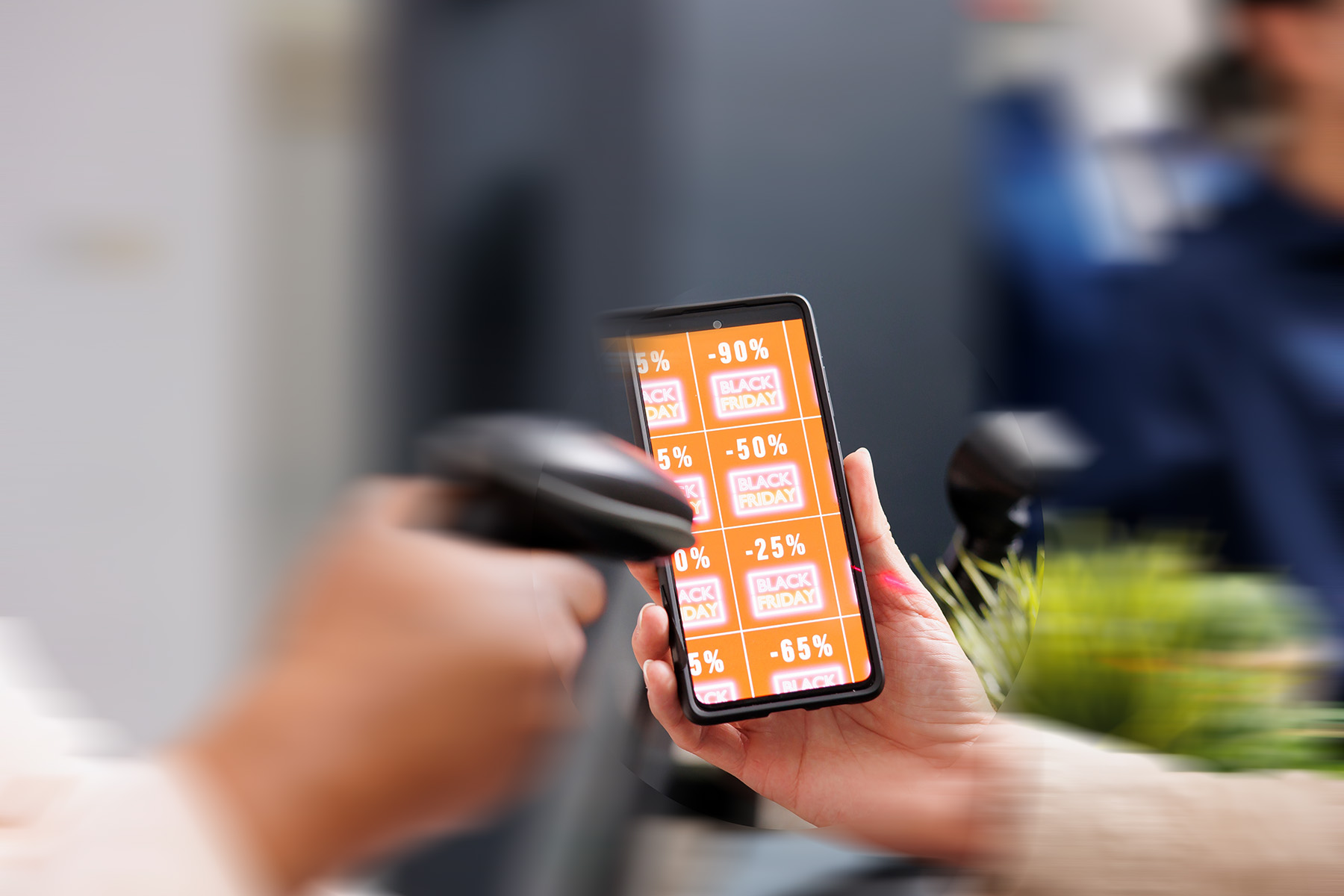A: It’s funny, every time I hear the demise of the third-party cookie, I feel like there needs to be a dun, dun, dun, after it because it’s such a seismic shift that we’re seeing across the industry. There are a couple of things that I hear and see all the time. So first and foremost, when we’re working with different clients across the board, especially as we look at brands and marketers, are those that are really leaning in, learning, and testing. They’re saying “I have all of these cookie-based workflows. I’ve got it figured it out.” Oftentimes they are starting on the paid media side of the house.
On the other hand, there are those that are saying, “I am going to wait and see what actually happens.” “I’m going to wait and see if the deprecation of the third-party cookie really does happen.”
The fact is, we’re moving away from a third-party cookie into a person-based identifier, and so therefore we are hearing a lot of questions on scale. Concerns surrounding the level of depth around those cookie workflows and which ones have to be replaced and which ones are just gone forever, are just a few to mention.
Q: A big focus for LiveRamp this year is the idea of data collaboration. Can you tell us a little bit more about the notion of data collaboration?
A: Yeah, absolutely. The idea of data collaboration is nothing new. However, the ability to do data collaboration in a privacy compliant way via a platform that is scalable, is where it gets exciting. When I talk about data collaboration, what I mean is, the ability for two companies – or two brands or partners -to be able to share their own first-party data. An example, we just had an announcement with Carrefour and their CPG partners. They have set up a means where they can share data in a controlled environment based on use cases, based on approved access and a set of privacy controls that they can now access data to be able to drive better paid media with greater insights. You can imagine on the Carrefour CPG side, CPGs are looking at it and saying, I actually need transaction level data so that I can now, in turn, build better audiences and create a better customer.
Where it gets really complex is when you need to be able to scale that but keep it controlled. It’s all about figuring out how to maintain data in an environment and protect that data from being leaked or used in multiple different facets. So, it’s really about how do you create that scalable platform with keeping privacy at the heart.
Q: Data collaboration sounds very interesting. And pretty simple, right?
A: The idea is straightforward and simple. The complexity and the nuances around the data, the privacy and those controls is where all of the complexity comes in. Because if you’re a brand, your most valuable asset is your first-party data – your customer data. It is also the most insightful information that you have. And so you don’t want that data to be used across any sort of use case. The challenges lie within how to manage and control your data, and still provide the insights that are needed across the board with your partnerships.
Q: Are there any other concerns or perhaps pushbacks from your clients regarding the privacy and safety of customer data across these collaborative partnerships?
A: Clients want to understand how their data is being protected. Once they understand the depth of the privacy, controls and the capabilities that are available, they know that their most trusted asset is going to be protected and will ultimately in control how that data gets accessed across their trusted partners. I think once they understand that a lot of the concern starts to go away.
It allows you to do more than just thinking about paid media or marketing use cases. It allows you to get much deeper into the customer experience and enhancing that as well.
Q: GDPR was arguably the catalyst for regulations across the globe, and we’re continuing to see more regions join this trend. Being located in the states, what’s the overall viewpoint on these new laws? And are you seeing a shift in business etiquette in terms of adapting to these changes?
A: In short, yes. We are already seeing it with the implementation of the CCPA regulation in California. I was reading an article the other day and it stated there were seven to ten states that had some sort of additional privacy regulation on the table for 2021. And so yes, the reality is it’s coming! And it is a good thing after all.
It will fundamentally change how we work within the industry. It weeds out bad behaviours and bad players, putting a force behind the need for what we call privacy by design. These regulations help us focus on how we insert privacy into product development at the earliest stages so that as we start to look at what the business challenges are – and what we are solving for – the solutions that we bring to market, privacy starts at step one instead of towards the end of the life cycle process.
Q: Today, we exist in a very nuanced world, a polarised world where marketers are quite rightly honing in on brand safety and suitability. What role will data play for businesses who want to push for quality advertising experiences?
A: There will continue to be a push on overall data quality. There is a constant pendulum when it comes to data; Do I want scale? Do want quality? The answer is both, surely? But when we think about how data gets used across advertising, it’s highly dependent on the marketer, the campaign, the targeting, or the strategy in terms of how accurate that data has to be. Going back to the conversation around privacy by design, it’s not just about the quality of the data, but how you acquire that data, the rights, and the use of that data. All of these things are very much tied together.
We must start looking at how we use quality data to enhance the overall customer experience. That is so important. And I think for so long, that’s been often been pushed aside. We are reaching a critical point now where we actually have to start delivering on that promise. And this in turn, very much feeds into the brand safety and sustainability focus.
Q: I want to take a slight change in direction, and talk about your podcast! Can you tell us how this came about and what inspired you to create this forum?
A: Thank you for asking that question. So my friend. Chad Hickey and I, (he’s the CEO of a company called Givsly, which is a social impact company in the US), were having lunch one day and we bonded over a couple of things. Both of us are very gregarious personalities, and very outgoing. We talked about the fact that when we go to networking events and walk in alone, how difficult it is for us. People just don’t expect that right? And it got us thinking, “Why aren’t people honest about these things?” And so, the more that we talked about these things, we said, “You know what? We really need to have authentic conversations.”
It’s so interesting. And I think because of the fact we’ve been so disconnected for the past year, it has become even more important for people to understand the struggles their peers may be feeling, and that everyone will cope very differently. The idea of personal versus work is gone. But, at some point, it just became clear to me that everybody needed either a virtual hug or just to know that, guess what? I’m your leader and I’m struggling with the same things. Or, I’m your leader, and I’m struggling, and here are the things that I’m doing. Our ego needs to drop, and empathy needs to rise.
Q: From a gender standpoint and through your podcast discussions, what progress is being made when it comes to the empowerment of women.
A: When I think about my career and I think about being in sales in the ’90s in the south of the US, I look at what I was faced with then and the opportunities that were presented to me versus what I see for women today. And I see a tremendous amount of growth across the board. I don’t think women en masse, at least in our industry, have to deal with the onslaught of what I dealt with or what a lot of women dealt with in previous generations or in other parts of the world.
Saying that, I still think that women get marginalised, and we are not in enough strategic conversations. When I’m on a Zoom, the first thing that I do is look to see how many other women are on the call. And it will come as no surprise, it’s not many. And that signals that we still have an issue.
I am not a sensitive person in general, but I’m sensitive to making sure that we are represented and that our voices are heard. One of the biggest things that the ‘DIB movement ‘has done (Diversity, Inclusion, and Belonging Movement) is to focus on the fact that it’s actually not about having a certain number of people of colour, nor a certain number of women, it’s about ensuring that our voices that are different, our points of views are different, and these differences have a seat at the table.
I applaud our industry, in general, for putting a stake in the ground and saying the diversity conversation is important. But it’s one thing to recognise it, and another to do something, to take action. What I am terribly fearful of is that if we come back in 18 months, we head back to a world where diversity and inclusion is not a key driver for organizations and instead becomes a tick-box exercise, verses something that businesses want to do. And that’s a concern that I have.
Q: COVID has significantly changed the way we do business and by default has created a huge shift for leaders. Many find themselves struggling to adjust to this new normal. From the discussions you’ve had with your network, what opportunities and learnings can we take from the past year?
A: It’s such a good question. Covid, for me, has been a real big driver for the need to have authentic conversations. Where leaders have found success, has been through being more transparent and authentic, more open and having discussions around feelings. Covid was – and still is – traumatic. And so we are all dealing with trauma at some level. When we think about that and we think about the fear that we had, it leaves a level of uncertainty which can be unsettling.
From my perspective, a good leader will see the opportunity to find ways to connect with people and to put their guard down and to lead from a human standpoint, not just from a performance standpoint. Creating spaces for people to be able to talk about those emotions, and having professionals come in and talk about mental health, is where we need to head towards, especially as we start to re-enter the office world.
If you asked me the positive things that come out of Covid, one is I think I am a better leader because of Covid. I forced myself to prioritise and to create boundaries because I saw how bad it was. I’m also working with my team to create those boundaries. People want to work for people that not just empower them, but help them grow across multiple different facets.
Q: Your podcast is all about finding purpose, purpose in what is a very complex industry and uncertain world. What tips and tricks would you give to our listeners in terms of finding purpose and how do we change your mindsets to look for opportunities instead of feeling trapped?
A: Such a good, powerful question. It all came about, simply because, I went through a journey in finding my purpose. Today, I am able to succinctly talk about it more so than in the past. It can seem a bit daunting in terms of thinking about your individual purpose, but it doesn’t have to be. Firstly, think about what it is that you enjoy doing. Think about the things that you are passionate about. And think about how you can apply those to either your job, to your teammates, to whoever.
Purpose goes out the window when you are literally working two jobs to sustain a family. Purpose goes out the window when you are terrified because of your name or what you look like, that you cannot find another job, that you don’t have other opportunities open to you.
If you work for a company that does not support your purpose, start small, start organic. And find other avenues because that purpose and that exercise of doing that, might lead you to someplace else.











